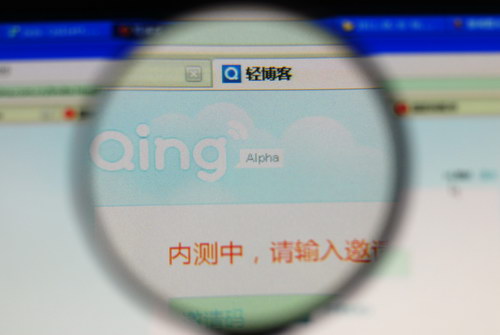Making micro blogs work well
Updated: 2011-09-05 11:32
By He Wei (China Daily)
|
|||||||||||
Marketers strive to optimize use of new platform for spreading their messages
SHANGHAI - Weibo (the micro blog) came of age in 2009 in China and has grown at a scorching pace. Sina Corp, the giant in the domestic micro-blogging arena, released a first-quarter financial report showing its Weibo subscriber numbers hit 140 million and are expected to reach 200 million by the end of this year.
 |
|
A desktop computer screen shows the website of the Sina Qing blog (light blog). Light blogs enable users to post multiple pictures, audio and video files, and texts of any length, while most micro blogs have tight space limits. [Photo/China Daily] |
With the number of micro-bloggers soaring, marketers are striving to optimize their use of the platform, and they have a list of questions: Am I doing well on micro blogs? How can I get more reposts? What are the best ways to attract more (relevant) followers? What types of information are worth sharing? The list goes on and on.
Traditional consulting firms seem powerless as brands are actively working to engage current and future customers through micro blogs. In contrast, social-media monitoring tools are quickly gaining momentum. They help brands discover in real time who is saying what online and where the conversations are happening, so that brands can promptly respond.
"There may be countless useful tips to drive up demand, but always share information that is relevant and will interest your target audience," said Chen Jifeng, a project manager of AdMaster, an online advertisement-tracking provider.
Chen oversees a micro blog monitoring tool called Weibo Master, a product designed specifically for enterprises that want to gain a foothold in a social-media campaign. Since its debut in May, it has attracted more than 300 enterprises, Chen said, 90 percent of which are Fortune 500 companies, including BMW AG, L'Oreal SA and Johnson & Johnson Services Inc.
"The idea derives from the ever-expanding social media landscape, as well as vendors' burgeoning demand for direct engagement with their clients," Chen said. "Above all, they need a quantitative evaluation of their digital marketing strategy."
The tool draws on complicated mathematical formulas to explore ways to expand a company's social-media influence and increase its following. Chen said three indicators have proved to be crucial in online marketing: the timing of posts, the content of posts, and the quality (instead of number) of followers.
Around-the-clock tracking shows Weibo usage hits its peak time either from 9 to 11 pm, or at noon. "However, quite a few brands we monitor tend to release posts around 4 to 5 pm, which largely reduces the likelihood of public exposure," Chen said.
The importance of timing is reflected in other research, too. One specific day and time consistently proves to be most successful when it comes to attracting new followers, according to a study by the United States-based INgage Networks, an online marketing firm.
Most would assume that the vast majority of new adds appear on Friday, but in fact more than 85 percent of accounts saw increased following on Tuesdays at noon. Mondays at 9 am came in second, according to the study, and Fridays were a distant third.
"Marketers tend to take things for granted, missing great opportunities for brand building. And this is the one suggestion we can offer based on our observations," Chen said.
Content is the key to any form of advertising. To retain and attract followers, Chen suggested marketers quench people's thirst for knowledge and direct engagement.
A snapshot of a popular content type includes questions, replies and inspirational messages, according to a report from CIC, a Chinese social business intelligence provider. The last thing you should do is to update random musings or status.
Chen's tool assesses the quality of posts through two dimensions. "Comments per follower" is regarded as the major gauge, accompanied by "repost for each post", the number of times a post is forwarded.
The second indicator evaluates whether the target audience genuinely contributes to brand building, Chen said.
A recent survey showed BMW, which encouraged followers to repost its ads by offering incentives, recorded the highest number (393) of reposts. "We study the best practices based on our statistics and indoctrinate more companies to leverage that practice," Chen said.
Chen's team also initiated the Follower's Active Index as a gauge of how active a follower is. It is assessed by the number of posts released by the follower a day and the time of updating the latest post.
After locating the most active followers, Chen suggested that merchants engage their respective loyal customers by reposting their posts, or sending out samples or souvenirs as a thank-you gift for sharing the information.
Haier Electronics Group Co Ltd, an electronic appliances supplier, said it saw a 68 percent rise in reposts after using a Weibo tracking platform. L'Oreal's luxury branch also found such tools helpful in providing data, systemic analysis, insight into and perspective on the Chinese social-media landscape.
In the US, the micro blog landscape is dotted with professional agencies that help track and manage a brands engagement and reputations on the social web. But in China the industry is wide open, said Dong Xu, a social-network specialist at Analysys International.
"These online tools will effectively serve vendors' marketing efforts in the digital era. But the biggest challenge will be striking a balance between targeting the right clients and the protection of their privacy," Dong said.













